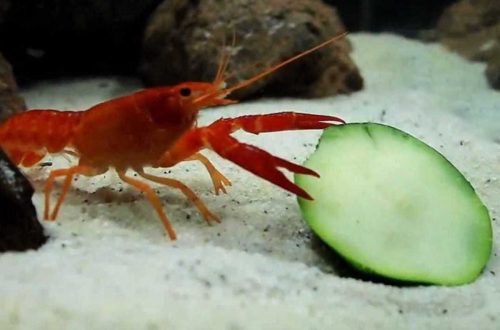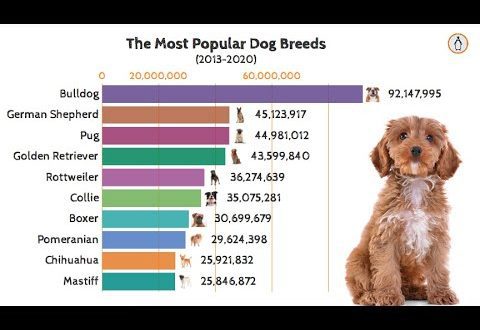What are the features of breeding ostriches at home
Breeding ostriches can be classified as a very profitable business. Raising birds at home requires less material costs than other activities, but the yield of meat, eggs, skin and feathers is higher, which makes this business attractive to residents of villages and villages. Investing in ostrich breeding at home is a long-term investment, since the life expectancy of a bird is 50 years, and an ostrich continues to lay eggs for up to 30 years of life.
Speaking of breeding ostriches, it may seem that the bird will not be able to survive in the harsh Russian climate. But experience shows that pets can adapt to frost up to 20ºС. Of course, this will not bring health to the ostrich and life expectancy will decrease, but it will not harm your business. The fecundity of the bird is very high, which is important for obtaining young animals.
The wings of birds are undeveloped, they do not provide for a keel in their structure, so they do not fly, but they quickly run at speeds up to 65-70 km per hour, they have very large and strong legs.
Contents
The main types of income from breeding ostriches
Assembling ostrich eggs
Bird eggs are valuable in nutrition because they have low cholesterol. Many people refuse chicken eggs, considering them unhealthy food for blood vessels and the heart. Ostrich eggs are completely safe in this regard, they can be eaten by older people. The cooking time of such an egg is from 45 minutes to an hour; two people can have breakfast with one product.
The weight of an ostrich egg is usually more than a kilogram, it reaches 16 cm in length and 12–14 cm in diameter. A strong shell is bought by specialists in the manufacture of souvenirs. It is practically impossible to buy an ostrich egg in stores, they are purchased directly from producers from the farm.
Obtaining meat products and selling leather
Ostrich meat is similar to beef or rather veal. It is dark red in color and contains no fatty layers. The calorie content of meat is very low. compared to other varieties – only 98 kcal. The meat is characterized by a fairly high protein content, which makes it satisfying and enhances the taste. Belongs to the category of dietary products.
Ostrich leather has many valuable qualities, one of them is waterproofness. Designer products from it are in constant demand because of the original texture. For sewing clothes and other products, skin from the back and chest is used, and the scaly skin of the legs is used to make shoes.
Sale of ostrich fat and sale of feathers
This product very useful for human, as it contains a large amount of polyunsaturated acids. Due to its nutritional value, it is used in all areas of cooking. Cosmetologists introduce it into creams, pharmacists make therapeutic ointments based on ostrich fat.
Tail white plumage is used for hats, dresses and in theatrical costumes. The remaining feathers are used to make cleaning tools.
poultry house requirements
Wall building materials
- Brick.
- Cinder block, foam block.
- Beam, boards, wood.
- Clay with straw.
The main construction features are not required, the main thing is that the walls are warm and keep warm in winter frosts. If the walls are sheathed along the frame, then it is recommended to fill the internal wall cavities with insulating materials, glassy peat, etc. The inner surface is plastered and covered with lime whitewash.
The floor is most often made of clay., the tree is not suitable, as it collapses from dampness. If a concrete floor is being made, an additional layer of insulation is required. The floor is covered with straw, sawdust and sand. During the mating season, sand is needed to build a nest, and in normal times, birds like to swim in sand baths. Remove litter and waste products twice a week, disinfect once a month.
The roof should not let rain water through and also requires an insulating layer in its design.
House dimensions
- For each adult ostrich, an area of u10bu2bat least XNUMX mXNUMX of floor is required.
- The ceiling height is made at the level of 3,5 m.
- The common room is divided into rooms by partitions to separate families from each other and so as not to mix different age generations.
- Ostriches must be in the light for at least 15 hours a day. If natural lighting in winter is much less, then artificial light sources are used. The intensity of illumination is based on the area of the room (5 watts per 1 m2).
The bottom of the window should be located at a height of 1 m from the bottom. Window openings are additionally fenced with a mesh.
In warm weather, the poultry house is ventilated with the help of natural air flow through the windows. For winter time, supply ventilation with the possibility of regulation is provided. Optimal temperature conditions for ostriches within the range from 15 to 21ºС.
Feeders should be made and arranged in such a way that all birds can come and eat at the same time.
For walking ostriches need a corral. Good conditions are considered when the corral is connected to the poultry house. You should not limit the free exit from the premises to the aviary, even in winter, birds love to walk in the fresh air.
Breeding ostriches at home
egg laying
The female ostrich begins to lay eggs at the age of two. Depending on the breed, egg laying lasts from 20 to 30 years. The best in this regard are black ostriches, very hardy and with a high level of egg production.
The period for laying eggs continues from mid-spring and lasts until late autumn. The female black ostrich lays more than 75 eggs during all this time. Nature provides that the female carries one egg in one or two days, until the number reaches two dozen. Then she sits on them to hatch chicks.
If the purpose of breeding ostriches is to obtain meat, that is, the livestock must be constantly grown, then the best solution would be to purchase incubator for chicks. Then, of all the eggs laid, the losses will be minimal, up to 5%.
Breeding chickens in natural conditions involves the participation of the female and the male in incubation, which replaces her at night, gives her the opportunity to drink water and eat food. Before laying, the female makes a nest in the sand, stuffs it with straw and grass. The owner must correct the edges of such a nest so that the eggs do not fall out and break.
Chickens begin to be born on the 42nd day from the beginning of incubation. If you do not take away the chickens from the mother, then she herself will take care of them and the hassle of the poultry house will decrease.
Conditions for breeding young animals
The main condition for rearing young ostriches is availability of a heated room during the cold periods of the year. The temperature must be kept up to 25ºС. The chicken is transferred to the poultry house only 6 hours after birth. Until that time, he is in the place of birth and gets used to the climate outside the eggshell. The space that each chick will need is 1 m2, as the chick grows, more space will be required in proportion to age.
The time of removal to an open enclosure after birth occurs after three days, if the chicken was born at an outside temperature of at least 18ºС. Fresh air helps to activate the movements of chickens, which begin the development of muscle mass. The first feeding also occurs at the same time.
For the first half of the year, chicks gain 60 kg each, but until the age of one and a half to two years they are kept separately from mature adult birds, only then they are assigned a place in a common poultry house and paddock. By that time, there should be at least 10 m2 of space for each head.
When using an incubator, the receipt of eggs from one female will increase, and the hatching process itself will be performed by the incubator. In modern models, all operations are automated, and human participation is minimized.
The diet of ostriches
Start feeding ostriches the day of the first walk. At this time, they need to receive protein for development, so they are fed with boiled eggs and cottage cheese. The diet of young shoots must be balanced, and the chick has grown into a beautiful and healthy bird.
Chopped leaves of alfalfa and clover are added to the composition of the feed for young chickens, protein in the amount of 20% must be added. From the age of one month, the protein rate is reduced to 16–18%, while fiber is constantly given.
By their nature, ostriches are omnivores, so the choice of food for them is very large. Various complex feeds are considered the main diet. Compound feed is given to birds at the rate of three kilograms per day per head. Compound feed is mixed with green mass in summer and hay, straw in winter.
For intensive growth, feed is used:
- Grains, peas, millet, wheat, oats, beans, barley.
- Vegetable supplements consist of potatoes, carrots, cabbage, spinach, silage.
- Protein supplements are mixed in the form of meat and bone and fish meal.
- Herbaceous feed consists of rape, clover, alfalfa, herbs.
In order for the gastrointestinal system of the ostrich to work fully, it is required feed them small pebbles and sand, which should be in a separate feeder. Ostriches take it randomly. Young animals need to be offered such a food grinder in the stomach from the age of three months, otherwise the bird may die due to indigestion.
The drinking regimen involves the consumption of an ostrich per day up to 10 liters of liquid. Water should always be in drinkers.
Breeding ostriches at home is a very exciting and profitable activity. Having understood the theory and gained a little experience, on small broods, you can put this matter on a broad basis.





